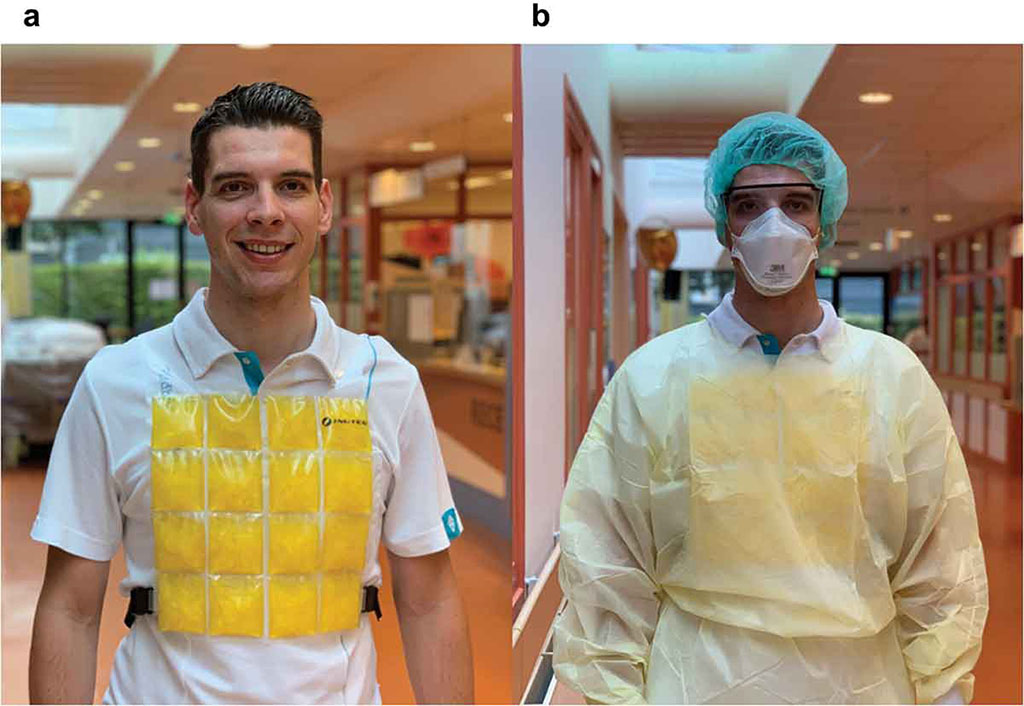Cooling Vests Reduce Heat Strain on COVID-19 Nurses
By HospiMedica International staff writers
Posted on 19 Jan 2021
Wearing cooling vests under personal protective equipment (PPE) can alleviate the perceptual heat strain affecting COVID-19 nurses, according to a new study.Posted on 19 Jan 2021
Researchers at Radboud University (RU; Nijmegen, The Netherlands) and The Netherlands Organization for Applied Sciences (TNO; Soesterberg, The Netherland) conducted a study to quantify perceptual and physiological heat strain in 17 nurses wearing PPE during their COVID-19 shift during two days, one with and one without a 21°C phase change material (PCM) cooling vest. Thermal comfort, thermal sensation, and rating of perceived exertion were scored after each work bout. Sub-PPE air temperature, gastrointestinal (GI) temperature, and heart rate (HR) were measured continuously.

Image: A PCM vest worn over a medical scrub (a) and under PPE (b) (Photo courtesy of RU)
The results showed that the participants' GI temperature increased only slightly during the increase in sub-PPE air temperature, indicating that the cooling vest had little effect on core temperature. Only 18% of the nurses reported thermal discomfort and 36% a slightly warm thermal sensation in the cooling vest during the PCM day, compared to 81% and 94% in the control day, respectively. Average HR was slightly lower in the cooling vest versus the control condition. The study was published on December 26, 2020, in Temperature.
“Without a cooling vest, almost 90% of the nurses experienced discomfort and warmth. With a cooling vest, only 20-30% of the participants experienced this,” said lead author Johannus de Korte, PhD, of the RU department of physiology. “They therefore perceived the conditions under which they have to do their work as more pleasant and comfortable. Virtually everyone said: 'with a cooling vest, I can work like I normally do without protective clothing'.”
The high evaporative resistance of PPE materials forms an insulated dry microclimate around the skin, leading to evaporative heat loss capacity and elevation of heat stress levels. The PPE induced heat strain is associated with increased exertion, thermal discomfort, and displacement beyond the thermoneutral zone, whereas sensory displeasure impairs effective decision making, even in the absence of elevated core temperature.
Related Links:
Radboud University
The Netherlands Organization for Applied Sciences














